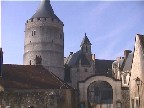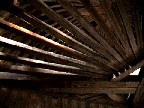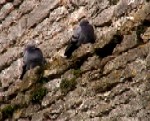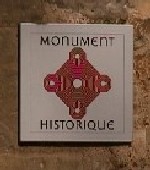|
Description of the site - Châteaudun Castle |
|||||||||||
|
Châteaudun is not on the Loire but the Loir, which is a tributary of the former. The castle is particularly interesting in that it is a sort of transition from medieval to renaissance and points the way to the series of much better known castles, the world renowned "Châteaux de la Loire". Thibaut's tower The oldest remaining part of the castle is the keep (donjon). This 31m high tower was built in 12th century, probably around 1180 AD by Thibaut V Comte de Bois, descendant of Thibaut the Cheat (Thibaut le Tricheur). It was part of a series of similar defensive towers built around the same time and would have stood alone or with an outer bailey and ditch. The only entrance is situated high up on the massive walls and was accessible by a removable bridge. The walls are 4 m thick at the base thinning down to 2 m at the top. The pointed roof (toit en poivrière) was added in the 15th century by Jean de Dunois, of whom more below. Originally, it would have had a flatter roof behind the crenellations. Recently a door has been pierced at ground level to provide a more convenient entrance to the lower storeroom, which originally would only have been accessible by a small manhole (a "trou d'homme" 60 cm in diameter) from the living quarters above. It provided enough storage to withstand a long siege. As shown on the right, the tower walls were pierced by two galleries which provided access to the arrow slits and also reduced the weight of the construction. The top floor was to become the Jean de Dunois' library.
|
||||||||||





